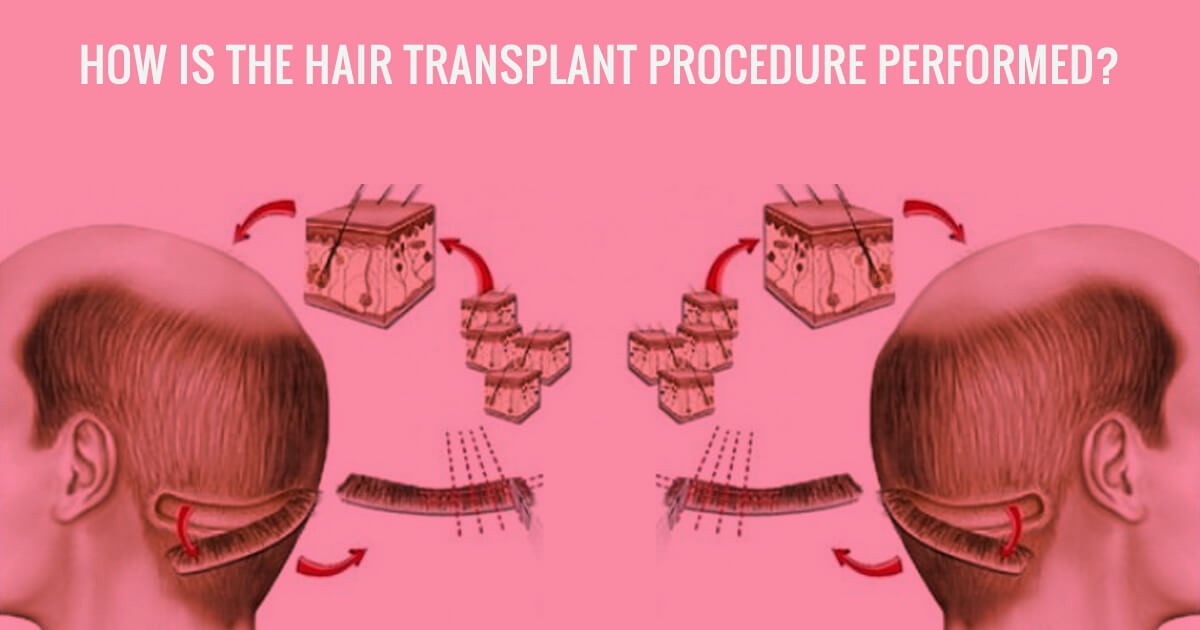There are 2 types of permanent hair transplant treatments, namely Follicular Unit Extraction and Follicular Unit Transplant. Follicles are the part of the hair root where hair cells multiply from and give us our hair length. The basic principle of a hair transplant involves obtaining the donor graft from part of the scalp with denser hair growth and placing the graft at the bald spot on the scalp known as the recipient site. Even though the methods differ slightly but there are various pros and cons for each type of hair transplant treatment.
Follicular Unit Transplant
Initially, a strip of skin with hair follicles is taken from the donor and cut further into smaller pieces. After, the recipient site or balding site is prepared for transplant by making micro-sized holes in order to place donor follicles. This type of hair transplant method is not as commonly used as before because the incision done to obtain donor follicles will leave a long horizontal scar across the back of the head. Post-transplant care is harder for the patient having to care for the recovery of 2 sites at the same time.
Who should opt for FUT method?
- People who have large areas of baldness and is willing to sit through a single session.
- People who don’t mind cuts, stitches or longer recovery periods.
Follicular Unit Extraction
This method is highly recommended for hair transplant treatment because natural-looking hair growth is achieved better aside from less post-op discomfort. The 1st step in this technique involves making tiny punch incisions to remove individual hair follicles from the back of the head, followed by creating tiny holes in the area of your bald spot and adjacent area for receiving the hair transplant. For the final step, the surgeon will place the hundreds and thousands of donor follicles in the recipient site individually.
Because the incisions are minute, the scars form will not be as visible as the linear scars formed during Follicular Unit Transplant. Even though the scars are numerous but they are smaller and require less time to heal. In addition, the surgeon can choose the best type of hair graft from the donor site, for instance, avoid grafts from white hairs.
The drawback of this treatment is that because of its meticulous procedure of obtaining individual graft and an equally laborious process of placing grafts individually into pin-point incisions, completion will take 2 days. Thus, it can add be an added financial burden and time-consuming treatment. Aside from a lower number of obtainable grafts in a single session. In addition, the fragile grafts are more prone to damage during harvesting. During post-procedure, patients are required to wear a cap for a couple of days for better recovery, so it may impede activities of daily living temporarily. For the best results, always have the procedure done by an experienced doctor. Recently, the hair industry has even invented a robotic-assisted FUE.
Who should go in for FUE method?
- For those who have smaller areas of baldness.
- For individuals who won’t mind having to wear shorter hairstyles.
- People with active lifestyles like sportsmen.
- People who prefer less invasive procedures and don’t want cuts, stitches on the scalp.
- Those who want a short recovery time.
Hair transplant treatment is a more effective way of overcoming problematic hair loss. Before going on this procedure or even purchasing over-the-counter remedies, please make sure you do a thorough reading on a permanent hair transplant or speak to a medical board certified doctor nearby.

